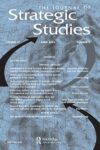05 October 2016
- RSIS
- Publication
- External Publications
- Reshaping the People’s Liberation Army Since the 18th Party Congress: Politics, Policymaking and Professionalism


Following the pivotal decision by China’s last paramount leader to change the course of China’s development in the latter years of the previous century, the People’s Liberation Army (PLA) has undergone profound changes that have enabled it transform itself more quickly than ever before. Under its current commander-in-chief, these developments have become more pronounced, with Xi Jinping taking a noticeably greater interest in harnessing the Chinese Communist Party’s (CCP) coercive forces as his domestic powerbase and as a foreign policy instrument complementing his country’s hard economic assets. Following the 18th Party Congress, reforms to the PLA’s command and control functions have continued apace. It is thus timely to scrutinize the PLA’s continued efforts to further enhance its operational capabilities, in terms of both its hardware – including its hard power projection and procurement – and its heartware – the softer aspects of its development, such as its opera- tional doctrine and military ethos. With the CCP keen to continue devoting substantial political and economic capital to strengthen the capabilities of its armed servants, the present period is a critical phase in the reshaping of the PLA into a force on par with the world’s other advanced militaries.
Following the pivotal decision by China’s last paramount leader to change the course of China’s development in the latter years of the previous century, the People’s Liberation Army (PLA) has undergone profound changes that have enabled it transform itself more quickly than ever before. Under its current commander-in-chief, these developments have become more pronounced, with Xi Jinping taking a noticeably greater interest in harnessing the Chinese Communist Party’s (CCP) coercive forces as his domestic powerbase and as a foreign policy instrument complementing his country’s hard economic assets. Following the 18th Party Congress, reforms to the PLA’s command and control functions have continued apace. It is thus timely to scrutinize the PLA’s continued efforts to further enhance its operational capabilities, in terms of both its hardware – including its hard power projection and procurement – and its heartware – the softer aspects of its development, such as its opera- tional doctrine and military ethos. With the CCP keen to continue devoting substantial political and economic capital to strengthen the capabilities of its armed servants, the present period is a critical phase in the reshaping of the PLA into a force on par with the world’s other advanced militaries.



